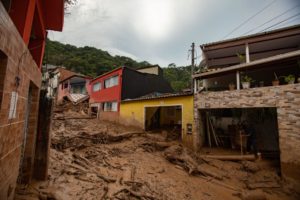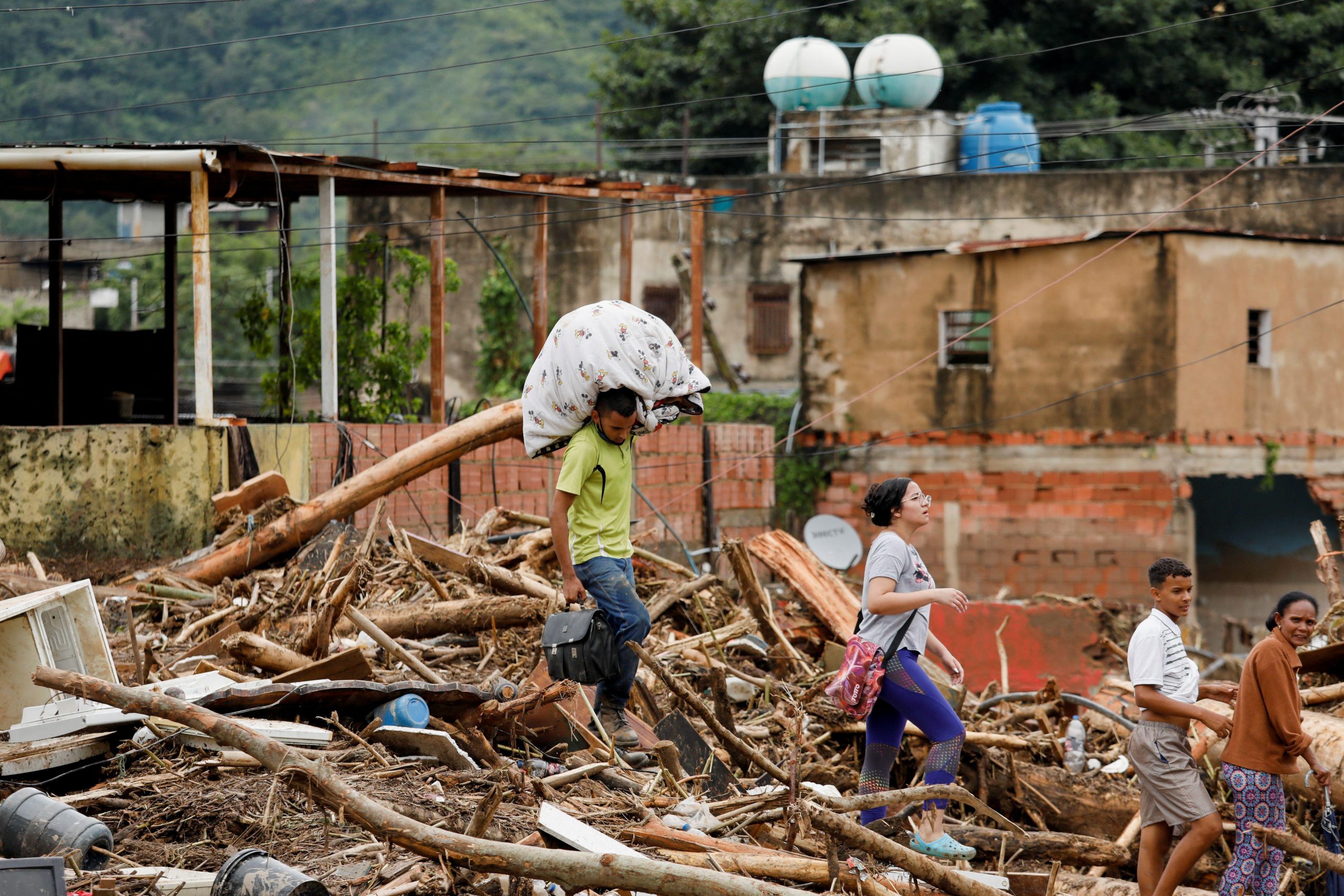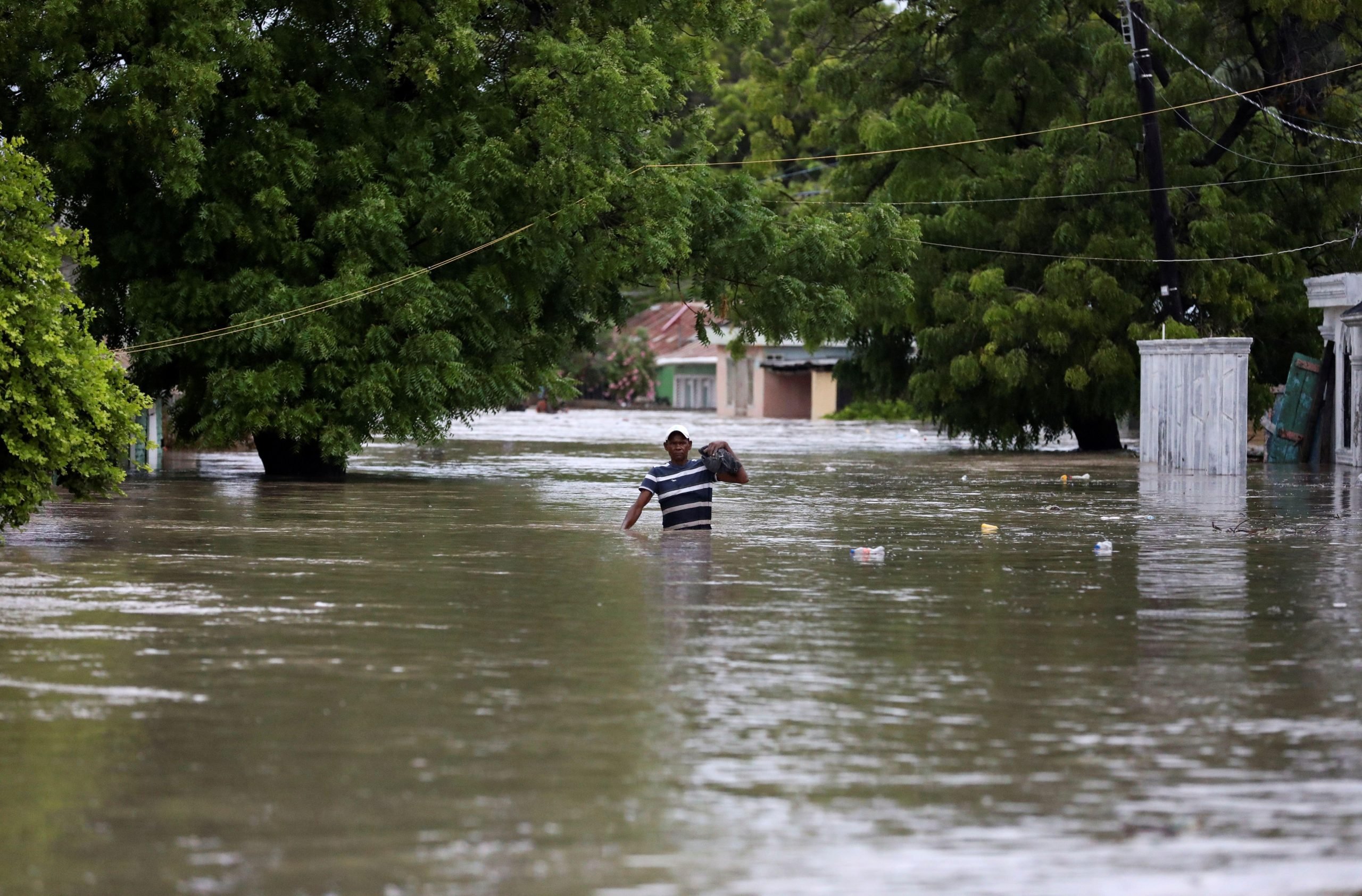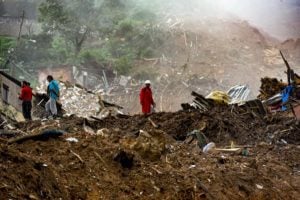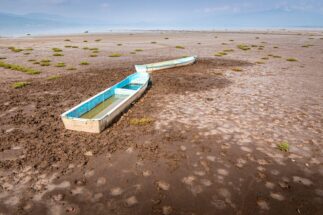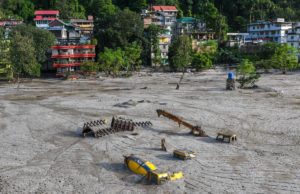Exposure to disasters has intensified in recent decades in Latin America and the Caribbean. The increase in the intensity and frequency of extreme weather events, driven by the effects of climate change, as well as by the impact of human activity on the environment, has accentuated the region’s already vulnerable social and economic conditions.
A disaster is a sudden or gradual event that causes disruption to the functioning of a society or community, leading to human, economic, material or environmental losses. It can be caused by many kinds of hazards – including natural, man-made and technological – as well as various factors that influence the exposure and vulnerability of populations.
Latin America and the Caribbean is the world’s second-most disaster-prone region, after Asia, and this situation is only becoming more complex and urgent, experts told Diálogo Chino. With as much as three-quarters of the region’s population estimated to be living in areas at risk of disasters, these phenomena have the potential for highly destructive effects.
Disasters related to climate are the most prominent in the region, accounting for 83% of the 106 disasters that happened in 2022, according to data gathered from EM-DAT, an international disaster database. South America was the most affected sub-region, with floods and storms being the most common disasters, and Brazil, Venezuela, Colombia and Mexico the countries experiencing the largest number of disaster events last year.
Why are Latin America and the Caribbean disaster-prone?
Along with high physical exposure to hazards, experts point to Latin America and the Caribbean as having a complex environment of risk drivers, including displacement and mass migration, dense urban populations, slow economic growth, climate change and political instability.
Amaly Fong Lee, a researcher on disasters at the International Maritime University of Panama, said that the region’s population is vulnerable “because most of our cities are still developing”.
As many cities in Latin America and the Caribbean have grown, they have often done so without proper planning, with informal settlements developing on the edges of sprawling urban environments, often on hills and steep-sloped areas, increasing the risk from hazards such as landslides. In a region of approximately 660 million people, around 340 million people live in cities with populations of 500,000 or more that are highly vulnerable to at least one type of natural hazard.
The region is exposed to a wide variety of hazards, from earthquakes to droughts. “We have a variety of ecosystems that makes us very vulnerable, with many countries placed on seismic and volcanic areas, and others in plains affected by flood and drought,” said Pascal Girot, an expert on disasters from the University of Costa Rica.
The World Bank’s 2005 Global Risk Analysis – a study it has not repeated since – estimated that seven of the world’s top 15 most disaster-vulnerable countries, exposed to three or more hazards, were in the region. Many of the events that have hit the region have been aggravated by the El Niño-La Niña climate phenomenon, which can bring disruption to temperatures, precipitation and wind patterns. Climate change is likely going to increase the frequency and severity of these hazards.
How many people are affected by disasters in Latin America and the Caribbean?
Between 2003 and 2022, the number of people in the region affected by disasters stood at 174 million, an increase of 67.3% compared to the previous 20 years (1983-2002), based on data gathered from EM-DAT. Between these two periods, the number of deaths (over 2780,000) and damages (US$254 billion) also increased by 93.2% and 252.1%, respectively. This contrasts with an overall global decline in these three areas.
In a region where 201 million people, nearly a third of the total population, are estimated to live in poverty, a disaster can cause people who have managed to pull themselves out poverty to fall back into these situations, since the effects of a disaster are magnified among the most vulnerable groups. This is especially problematic for countries in Latin America and the Caribbean, considered by many NGOs and thinktanks to be the most unequal region in the world.
What is the cost of disasters in Latin America and the Caribbean?
The losses associated with disasters have resulted in significant disruption of many countries’ economies.
Hurricane-prone, small-island Caribbean countries, such as Antigua and Barbuda, and Dominica, experience the highest economic damage due to disasters, losing on average almost 3% of their GDP annually between 1980 and 2018. Some disasters are bigger than others, such as Hurricane Maria in 2017, which in Dominica caused damages estimated at 220% of GDP.
One of the region’s poorest countries, Bolivia experienced 84 extreme weather events – including droughts, floods, wildfires, landslides and heatwaves – between 1965 and 2020, causing US$3.7 billion in damages, equating to roughly 9% of its current GDP.
Floods are the most common disaster in the region, especially affecting Colombia, Brazil and Peru. On 12 occasions since 2000, EM-DAT data shows, floods in Latin America and the Caribbean have caused over US$1 billion in total damages. Storms are also becoming more frequent: the 2020 Atlantic Hurricane season was the most active on record with 30 named storms, including 14 hurricanes. Drought, meanwhile, is the disaster that has affected the highest number of people – 53 million since 2000.
What recent disasters have hit the region?
Last year, extreme rainfall events in South America caused flooding and landslides affecting thousands of people. In the state of São Paulo in Brazil, at least 19 people were killed. In Central America and the Caribbean, heavy rainfall and flooding events were also recorded, while in Suriname, the government declared seven of the country’s ten districts as disaster zones following floods.
Similarly damaging events have happened so far this year. In Argentina, a severe drought influenced by La Niña has hit farmers and the overall economy, shaving off roughly 3% of its GDP. In Haiti, at least 78 people were killed and 143 injured during tropical storm Arlene, while at least 88 were killed and 43 injured due to a landslide in the city of Alausi in central Ecuador caused by soil erosion.
What is disaster risk reduction?
Historically, disaster efforts have focused on emergency response. However, towards the end of the 20th century, it was largely recognised by experts that countries can only prevent losses and alleviate the impact of disasters by managing risk and working on underlying drivers such as urban development. This is known as disaster risk reduction (DRR).
DRR is “the concept and practice of reducing disaster risks through systematic efforts to analyse and reduce the causal factors of disasters,” as the UN describes it. It involves activities related to prevention, such as relocating people from a hazard area, mitigation, such as building flood defences, and preparedness, such as identifying evacuation routes.
In 2015, governments around the world adopted the Sendai Framework, a UN global agreement on DRR. It includes seven targets to be delivered by 2030, such as reducing disaster mortality and economic losses, and increasing the number of countries with disaster risk strategies. The framework’s implementation is supported by the UN Office for Disaster Risk Reduction (UNDRR).
By 2030:
• Reduce global disaster mortality
• Reduce the number of affected people globally
• Reduce direct economic loss in relation to GDP
• Reduce disaster damage to critical infrastructure and disruption of basic services
• Increase the number of countries with national and local disaster risk reduction strategies
• Substantially enhance international cooperation to developing countries
• Increase the availability of and access to multi-hazard early warning systems
“We can prevent disasters by addressing vulnerabilities,” said Deysi Jerez Ramírez, a researcher on disaster risk reduction at the University of Science and Arts of Chiapas in Mexico. “If there’s no vulnerable population, the damage caused by a natural phenomenon is reduced.”
Fong Lee added: “Our countries are more used to responding to the emergency rather than working beforehand on the factors leading to the disaster. This must change.”
Experts agree that, instead of treating the aftermath of disasters, countries should be focusing on mitigating disaster risk. “Countries should incorporate a disaster risk perspective to all areas of government and think on the long-term,” said Raquel Letjerer, a Uruguayan architect specialising in risk management. “Spending money to address the impacts of disasters means giving up on funds that should be invested in the development of the region.”
The UN estimates that every US$1 invested in risk reduction and prevention can save up to US$15 in post-disaster recovery, and every US$1 invested in making infrastructure disaster-resilient saves US$4 in reconstruction. Between 2010 and 2019, US$133 billion was spent in disaster-related aid but only US$5.5 billion in measures to reduce the risks and lessen the impacts of disasters.
What progress has the region made on disaster risk reduction?
Latin America and the Caribbean have made progress on some of the targets of the Sendai Framework. Governments are allocating regular funding for DRR and establishing regulations for incorporating DRR assessments into approval processes for public projects, UNDRR reports. By 2020, half of the 33 countries in the region had national DRR strategies, plans and policies in place.
Countries have also started to develop and implement early warning systems, a key tool that mitigates the risk produced by disasters. In South America, government agencies, research centres and the private sector have partnered up to create SISSA, a drought information system focused on southern South American countries.
Disaster risk reduction is still seen by many governments as an unnecessary expenditure when it’s actually an investmentAmaly Fong Lee, International Maritime University of Panama
“On our website, people can visualise the current situation regarding drought, either regionally or locally. There’s information on soil moisture, weather forecast, vegetation and much more,” said María de los Milagros Skansi, one of SISSA’s coordinators. “We also work on strengthening the capacity of our member institutions to improve ourselves.”
There have also been government outreach projects to minimise disaster impacts. In Bolivia and Peru, local farming communities living near Lake Titicaca worked with governments and researchers on the Pachayatiña/Pachayachay project (meaning “land wisdom” in the Aymara and Quechua languages), in which they worked to build capacity to address drought, from improving weather forecasts to research on drought impacts and prevention.
Within the region, bilateral projects are also in the works. The cities of Córdoba in Argentina and São Paulo in Brazil are working on a cross-border project to address their collective vulnerability to flooding, drought and landslides. Meanwhile in Central America, the NGO Global Water Partnership worked with urban and rural communities to develop rainwater harvesting systems and minimise impacts brought upon by droughts.
Despite these efforts, experts agree that many challenges remain in preventing disasters in Latin America and the Caribbean. Very few countries have implemented multi-sector approaches to address the drivers of risk, such as strengthening land-use planning to prohibit building in risky areas, while disaster-focused funding has still primarily been allocated towards emergency response activities.
“Disaster risk reduction is still seen by many governments as an unnecessary expenditure when it’s actually an investment,” Fong Lee said. “We could save lives and money by taking action today. We now need a political awakening.”
